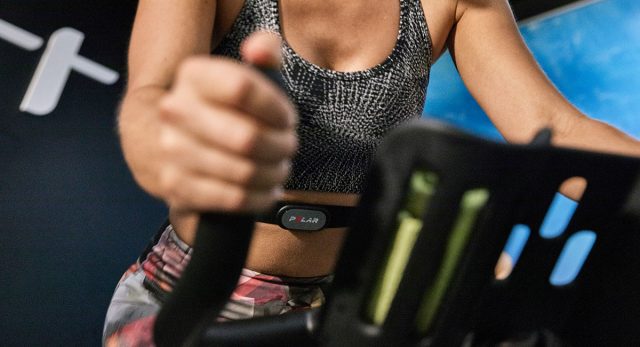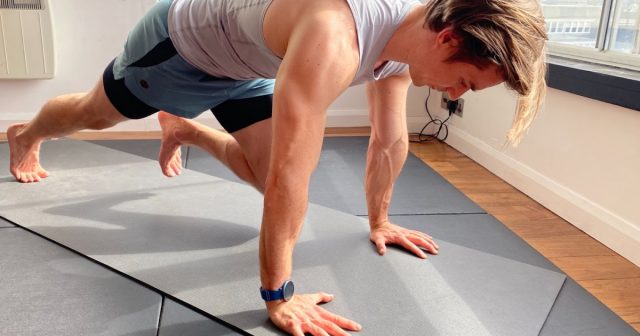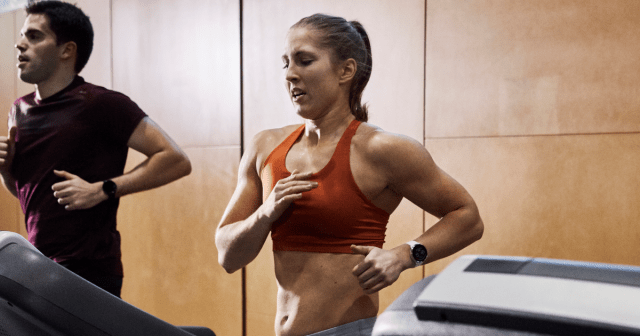You’ve probably heard the term VO2max, maximal oxygen uptake, once or twice, but what does it mean, really?
While metrics and measurements like VO2max might seem foreign and unimportant to some, knowing and understanding these terms can help you reach your goals — regardless of what your current ability or fitness level may be.
No matter what your chosen discipline is, the oxygen your body processes during aerobic exercise will have a direct impact on your overall performance.
To help take some of the mystery out of what these terms mean, let’s take a look at everything you need to know about V02max to take your fitness and overall health to the next level.
What is VO2max and Why is It Important?
The maximum amount of oxygen an individual can use during exercise is commonly referred to as a person’s VO2max.
VO2max explained
When measured, your individual VO2max can tell you how many millilitres of oxygen is being used by each kilogram of your body weight.
While this can seem overly scientific, knowing this measurement can tell you what your current cardiovascular fitness is and the potential of your aerobic endurance in the future.
VO2max In ACTION
Since muscles need oxygen to move over the prolong periods required for sports like running or cycling, improving this metric can make you healthier and boost your overall performance.
For beginners and experienced exercisers alike, a higher VO2 max can make workouts feel easier, lower your 5K or 10K times by a significant margin, and help you go longer without tiring as quickly during races or difficult workouts.
VO2max In General
In terms of overall health, studies have also shown that a better VO2max can bring many benefits that shouldn’t be discounted.
Aside from boosting the health of your heart and lungs, a healthy, efficient, and well-functioning cardiovascular system can:
- Protect against vascular dementia.
- Help combat memory loss as we age.
- Stimulate the growth of new blood vessels in the brain.
This connection between the heart and the brain is important for everyone, not just something that athletes should work on.
How to Measure VO2Max
If you’re interested in measuring your current aerobic fitness levels through a VO2max test, there are a few different ways to do tha
1. Lab Test
The most accurate way to test your VO2max is in a laboratory. Intensity will be varied (usually on a treadmill) while your respiratory rate and heart rate are measured during a 20-minute test.
Depending on your concentration of oxygen and carbon dioxide being inhaled and exhaled, your VO2max will be scored.
Since these tests can be expensive and not realistic for most exercisers, there are other options available to calculate the efficiency of your cardiovascular system with a simpler VO2max test.
2. Fitness Test
If you’re using a Polar product, a quick five-minute Fitness Test can give you an estimate of your maximal oxygen uptake (VO2max). While other tests might require you to perform for a specific duration and be based on a number of different variables, this test can be done at rest at any time with minimal stress.
This test uses your current heart rate data alongside a variety of other information to achieve accurate estimates of VO2max, including:
- Resting heart rate
- Heart rate variability
- Gender
- Age
- Height
- Weight
- Training background
Once you have your scores, you’ll immediately know your current VO2max fitness level and be able to compare this value to others in the same age and gender groups.
3. Running Index
In addition to the Fitness Test, Polar’s Running Index is another tool that can provide current update metrics of your running VO2 max after every workout session.
These algorithms base VO2 max off of your heart rate and running speed in addition to the information above, making it an easy and convenient way to:
- Keep track of your aerobic fitness levels for each running session.
- Help to predict your time results in upcoming running events.
- Make adjustments to your training plan and know if your planned workouts are doing what they’re supposed to.
4. Performance Tests Out On The Field
For anyone who’d rather do a field test for accuracy, you’ll need a bit more time and a few additional pieces of equipment.
Here’s what you’ll need to do.
Cycling V02max test
You can test your cycling performance on the road, but completing the test on an indoor trainer is a safer option – you can concentrate on performance while not worrying about traffic, stop signs, and intersections.
To do the test, you’ll also need a power meter and a heart rate monitor. To complete the Polar Cycling Performance test, you’ll need to measure your functional threshold power, or the maximum amount of power you can sustain for 60 minutes of cycling.
The Polar Vantage V2, will guide the workout and show you the data once you’ve completed the test.
This is an all-out effort similar to an individual time trial. If you have a Polar product with GPS, you’ll be able to do a shorter 20, 30, or 40-minute test.
Running V02 max test
Also available on Polar products, like the Polar Vantage V2, the Running Performance Test is easy to perform and can be an easy way to figure out your heart rate, power, and speed zones in addition to your VO2max metrics.
This test can be done maximally or sub maximally depending on your preference and how accurate you want the results to be. The maximal test will be the most accurate but require greater workout intensity.
Your Polar product will guide you through a quick warm up and alert you when your all-out efforts and rest periods are required.
What VO2max Tells You
Before you take the test, you should know that age, gender, altitude, and current training load can affect your results. That’s why comparing your VO2max numbers to someone else’s can be tricky.
While your Polar product will show you your rating category (good, very good, excellent, etc.), you can also use this chart to get an idea of how you compare to your age and gender.
When looking at your results, keep this in mind:
- Only 11% of the population falls in the very good and excellent categories.
- About 22% of people fall in fair and good categories for VO2 max.
- A majority of people (34%) are in category 4, or average.
Wondering how results can measure how you’ll perform in your next 5K, 10K, or marathon?
For example, a Running Index rating of 50 estimates that you should be able to finish a 10K in about 52 minutes and a marathon at a few minutes over four hours.
If you use the Running Index feature on your Polar product, you can use this chart to estimate your finishing times.
How to Improve Your VO2 Max
Now that you’ve calculated your VO2max, know what these measurements mean, and can estimate your finishing times, let’s take a quick look at how one can go about improving these baseline metrics.
Completing VO2max intervals, whether you’re running or cycling, can help to improve your:
- Efficiency
- Aerobic endurance
- Lactate threshold
- Power
Completing these type of interval sessions once or twice a week can also help you tolerate pain better (similar to what you’ll experience in a race) and help build the mental fortitude needed to begin pushing yourself to new heights.
But while studies have shown that intensity is the key to boosting VO2max, you should also remember that doing too much too soon can result in injury.
If you’re not experienced with interval training, start with one day per week and allow for a recovery session the following day or two.
Here are two sample workouts you can try:
1. Running VO2 interval
After an easy five to 10 minute warmup and three to five strides, alternate running two minutes hard with two minutes easy.
Experiment with your pace and don’t worry if your times during the hard efforts vary.
Repeat the on and off cycle five to eight times (depending on experience) and follow with a 10 to 15-minute cool down.
Cycling VO2 interval
Following a 10- to 15-minute warm-up (getting into zone 3), alternate three minutes of hard cycling with three minutes of easy pedaling.
The hard phase should reach 110 to 120 of your functional threshold power (FTP) if you’re using a power meter, or zone 4/5 of your heart rate training zone.
Complete three to five sets depending on your comfort or experience level with intervals.
Be sure to cool down with nice and easy spinning for 15 to 20 minutes to end your session.
If you liked this post, don’t forget to share so that others can find it, too.
Or give it a thumbs up!
I like this article
Please note that the information provided in the Polar Blog articles cannot replace individual advice from health professionals. Please consult your physician before starting a new fitness program.




